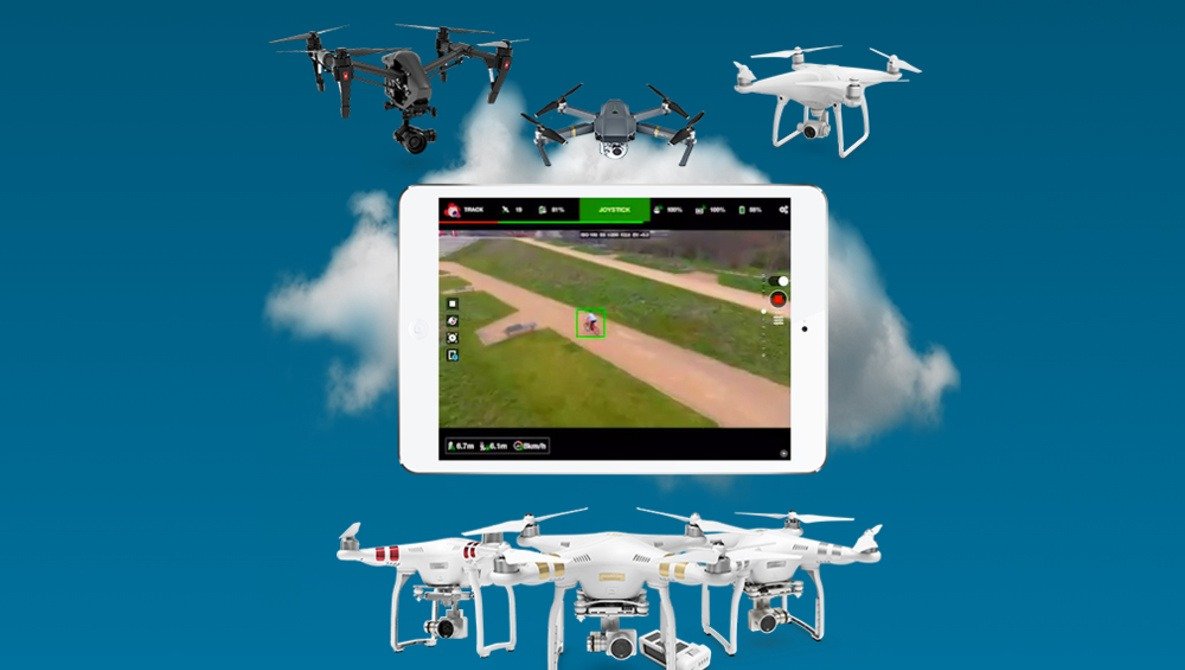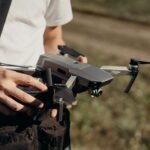Introduction
Importance of Agricultural Technology
Agricultural technology is reshaping how we cultivate and manage land, ensuring food security while meeting the demands of a growing global population. As challenges like climate change and soil depletion become more pronounced, the agricultural sector needs to adapt rapidly, leveraging innovative solutions. Imagine walking through your local farmers’ market. Each stand is filled with vibrant fruits and vegetables, all grown on farms that now harness technology to enhance the quality and yield of their crops. The rise of agricultural technology means that farmers can do more with less – less water, less labor, and fewer chemicals. The importance of agricultural technology can be summed up in a few key benefits:
- Increased Productivity: Technology permits farmers to monitor crop health and optimize their inputs effectively.
- Resource Management: Tools like sensors and drones allow for precision farming, reducing waste and improving sustainability.
- Labor Efficiency: Mechanization and automation free farmers from tedious tasks, allowing them to focus on strategic planning and growth.
Do you remember the last time you saw a drone buzzing above a field? While this may have seemed like something out of a sci-fi movie not too long ago, such technology is indeed a reality. Farmers are now using drones to gather real-time data that helps them make informed planting and harvesting decisions. And this brings us to one of the most exciting agricultural innovations: the Litchi Drone.
Overview of Litchi Drone
The Litchi Drone represents a significant leap forward in the realm of agricultural technology. Designed specifically for precision farming, this drone operates using advanced features that allow for detailed monitoring of crops. What sets the Litchi Drone apart from traditional methods is its ability to efficiently gather data over large areas, all while maintaining high accuracy. Let’s break down the various components:
- High-Resolution Cameras: These capture images and videos of the crops, allowing for meticulous inspections.
- Sensors: The Litchi Drone is equipped with multiple sensors that measure soil moisture, temperature, and nutrient levels, providing farmers with a comprehensive overview of their fields.
- Autonomous Navigation: With built-in GPS and mapping software, the drone can autonomously navigate farms, optimizing coverage.
A personal experience underscores the importance of such technology: A close friend of mine, an organic farmer, once struggled with accessing crop data. After integrating a Litchi Drone into his farming routine, he could remotely monitor his fields. The drone provided valuable insights on areas needing attention, which resulted in a more robust yield that season and a great reduction in resource costs. As you consider the integration of drones like the Litchi Drone into farming operations, it’s essential to appreciate both their innovative capabilities and the broader trend they signify. Here are some of the transformative impacts you can expect from using the Litchi Drone:
- Real-time Monitoring: Imagine being able to check the health of your crops from anywhere!
- Data-Driven Decisions: Rely on analytics to make informed choices regarding your planting and harvesting schedule.
- Improved Environmental Stewardship: By targeting specific problems, farmers can utilize fewer resources, reducing the waste and runoff that often leads to environmental degradation.
In the next sections, we will delve deeper into the remarkable impact of the Litchi Drone in farming, exploring how it increases efficiency and offers notable environmental benefits. You’ll discover how these features translate to improved farming practices and what this means for our agricultural future. Stay tuned! The journey into the world of agricultural technology continues as we explore how the Litchi Drone is revolutionizing traditional farming methods and setting a new standard in crop management. 🌱🌍
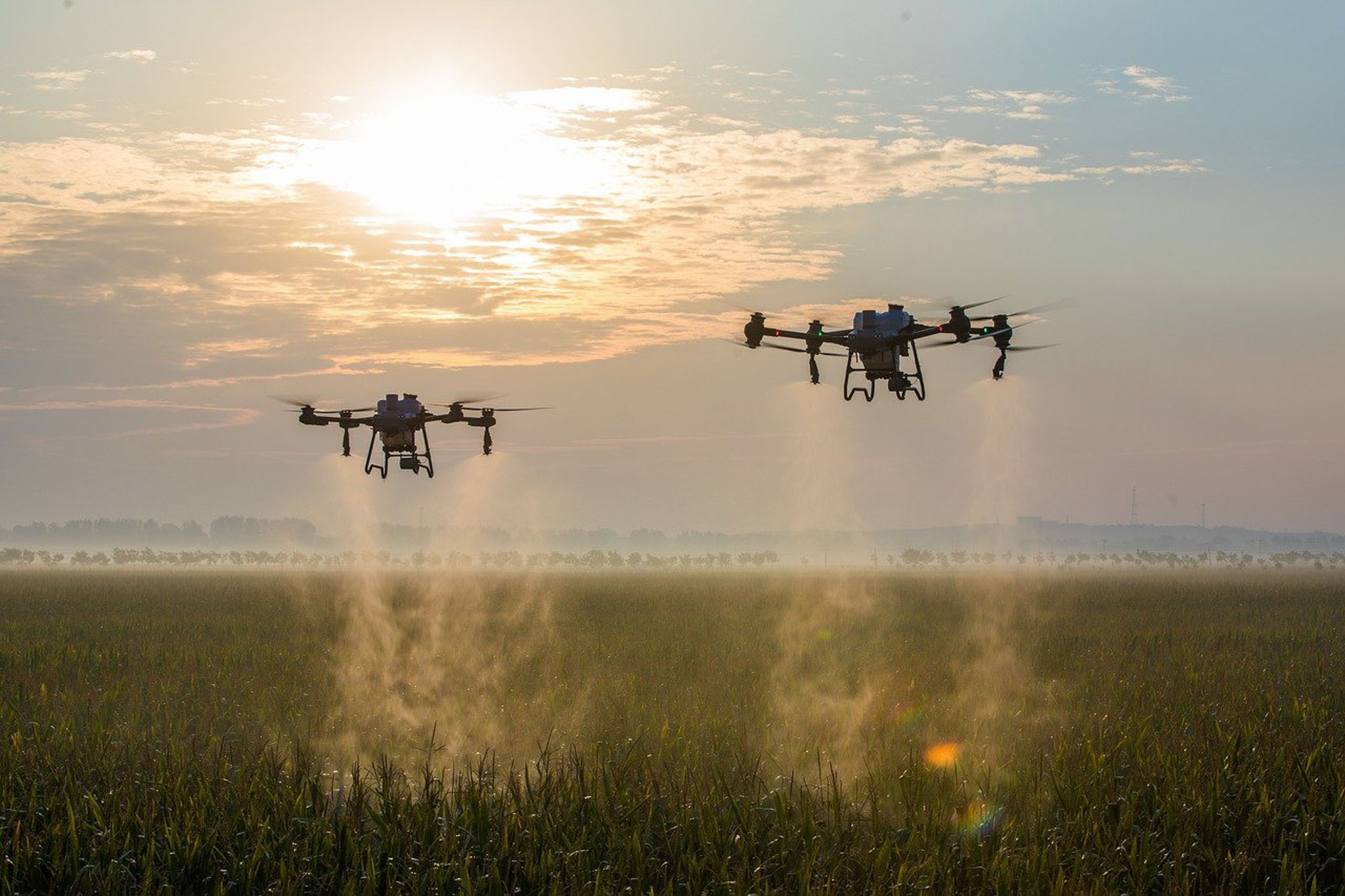
The Impact of Litchi Drone in Farming
Increased Efficiency
When discussing the impact of the Litchi Drone in farming, the first thing that stands out to most people is its ability to significantly boost operational efficiency. If you think about the traditional methods of monitoring crops, it often involved labor-intensive practices like walking through fields, visually inspecting crops, and manually gathering data. This not only consumes a lot of time but is also prone to human error. Enter the Litchi Drone. This innovative technology automates those tedious tasks, allowing farmers to cover vast areas in a fraction of the time. Imagine being able to gather detailed information from an entire farm in just one short flight! Here are some of the ways the Litchi Drone promotes increased efficiency:
- Rapid Data Collection: With its advanced sensors and cameras, the Litchi Drone can collect high-resolution images and data points over large areas quickly.
- Real-Time Analysis: Farmers receive immediate insights about their crops, which allows them to respond to issues as they arise, rather than weeks or months later.
- Targeted Treatments: The ability to identify specific areas within fields that require attention enables farmers to apply fertilizers, pesticides, or water more effectively, reducing waste.
A neighbor of mine runs a large vineyard, and he recently shared how the Litchi Drone has completely transformed his operation. Instead of relying on long hours of manual inspections, he now only needs to launch the drone once every week. The data collected allows him to pinpoint precisely which grapevines need watering or treatment. Not only has this saved him countless hours, but it has also led to healthier vines and a better harvest. The Litchi Drone also allows farmers to reallocate resources more effectively. With improved efficiency, you can expect:
- Lower Labor Costs: Reducing the need for labor-intensive monitoring leads to savings that can be channeled into other areas of the farm.
- Greater Precision in Resource Use: Utilizing data-driven decisions, farmers can optimize their inputs, resulting in less waste.
All in all, the increased efficiency offered by the Litchi Drone is a game-changer for agricultural businesses, enabling them to operate smarter and more sustainably.
Environmental Benefits
As we dive deeper into the impact of the Litchi Drone, the environmental benefits it provides cannot be overlooked. In an era when sustainable farming practices are crucial for preserving our planet, the Litchi Drone stands out as an ally for environmentally conscious farmers. It not only enhances efficiency but also promotes practices that can help mitigate the adverse effects of traditional farming. Here’s how:
- Reduced Chemical Use: By targeting specific problem areas, farmers can apply fertilizers and pesticides only where needed – minimizing overall chemical usage and protecting the surrounding ecosystem.
- Water Conservation: The drone’s ability to monitor soil moisture levels allows farmers to irrigate precisely, reducing water consumption while ensuring crops receive adequate hydration.
- Minimizing Soil Erosion: With precision farming techniques, farmers can also maintain soil health by minimizing tilling and avoiding run-off, which helps prevent soil erosion over time.
I remember visiting a local farm that employs the Litchi Drone technology. The farmer proudly pointed out how he had reduced his chemical applications by nearly 40% since utilizing drone data for targeted treatments. This not only helped him cut costs but also fostered healthier soil and a cleaner environment surrounding the farm. Here’s a quick summary of the key environmental benefits:
| Benefit | Description |
|---|---|
| Reduced Chemical Use | Targeting applications minimizes chemical runoff. |
| Water Conservation | Precision irrigation leads to less water waste. |
| Minimized Soil Erosion | Precision practices help maintain soil integrity. |
By adopting the Litchi Drone, we are not just improving profits and yields; we are also taking significant strides towards more sustainable farming practices. In the next section, we will explore the impressive features of the Litchi Drone, unveiling the technology behind its precision farming capabilities. Stay tuned for a closer look at how this remarkable tool is revolutionizing farming practices and pushing boundaries in agricultural technology! 🚜🌱

Features of the Litchi Drone
Precision Farming
Continuing our exploration of the Litchi Drone, let’s dive into one of its most significant contributions to agriculture: precision farming. This concept has taken root as a pioneer in modern farming techniques, allowing farmers to make the most of every inch of land they cultivate. Precision farming is all about using detailed data to inform decisions, ensuring that crops receive exactly what they need to thrive, with minimal waste. The Litchi Drone plays a crucial role in this process. Here’s how:
- Field Mapping: The drone can create detailed maps of your fields, highlighting variations in crop health and nutrient levels. This information enables farmers to identify which areas require different treatments, ensuring tailored management practices.
- Variable Rate Application: Farmers can apply fertilizers, pesticides, and water in specific areas, optimizing the application rates for each section of the field according to its specific needs.
- Timely Interventions: With real-time data, you can make adjustments promptly—whether it’s applying additional nutrients or controlling pests before they cause extensive damage.
A farmer friend of mine recently transitioned to using the Litchi Drone for his grain crops. He shared how he can now allocate resources more intelligently. By analyzing the drone’s data, he discovered a section of his field that was consistently underperforming. By targeting that specific area with additional nutrients, he significantly boosted its yield the following season. These features allow farmers to be more strategic with their resources, leading to:
- Higher Yields: Crops get exactly what they need when they need it, maximizing productivity.
- Cost Efficiency: Reduced input costs mean farmers can stretch their budgets further and increase profitability.
In short, precision farming facilitated by the Litchi Drone empowers farmers to operate in an increasingly efficient manner, ultimately promoting smart agricultural practices that both enhance yield and protect the environment.
Remote Sensing Technology
Now, let’s explore another exciting aspect of the Litchi Drone: its advanced remote sensing technology. This feature is integral in enabling farmers to monitor their fields effectively without being physically present, making it an invaluable tool, especially for those managing large plots of land. Remote sensing technology utilizes various types of sensors—some even capable of capturing wavelengths of light that our eyes cannot see. Here are the notable points regarding the Litchi Drone’s remote sensing capabilities:
- Multispectral Imaging: By capturing images in different spectral bands, the drone can provide insights into plant health and stress levels. For instance, it can detect chlorophyll concentration, enabling farmers to gauge how well their crops are photosynthesizing.
- Thermal Imaging: This feature can identify temperature variations across the field, helping farmers discern which areas are too hot or too cold and need special attention regarding irrigation or shading.
- Crop Monitoring: By conducting frequent flyovers, farmers can track changes in crop health throughout the season, reacting quickly to any issues that may arise.
A local orchard owner shared that using remote sensing technology with the Litchi Drone had a substantial impact on his apple yield. Before utilizing this technology, he relied on periodic inspections. Now, with the drone, he receives vital information about soil moisture and crop stress, allowing him to adjust watering schedules accurately—resulting in more robust fruit development and significantly fewer losses due to drought stress. Here’s a summary table of the benefits provided by remote sensing technology:
| Feature | Benefit |
|---|---|
| Multispectral Imaging | Identifies plant health and stress levels. |
| Thermal Imaging | Monitors temperature variations effectively. |
| Frequent Crop Monitoring | Enables timely interventions and precise management. |
The combination of precision farming and remote sensing technology makes the Litchi Drone an incredible ally for modern farmers. In the next section, we will explore how the Litchi Drone operates, emphasizing its autonomous features and sophisticated data collection capabilities. Don’t go away; the best is yet to come! 🌐🚀
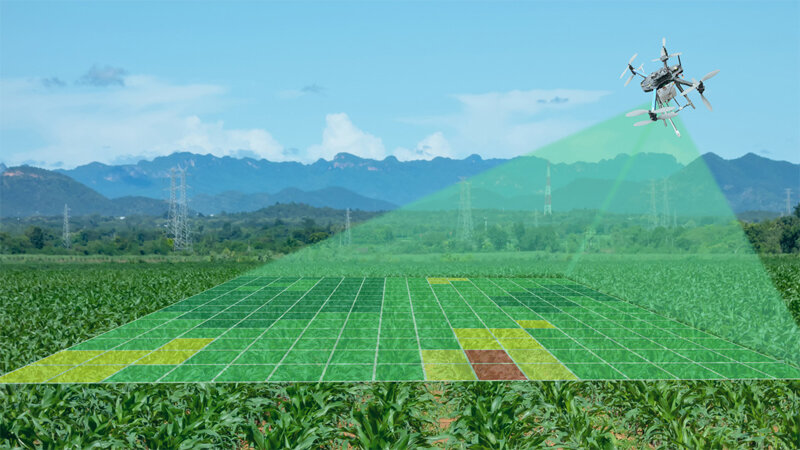
How the Litchi Drone Works
Autonomous Operation
Now that we’ve explored the impressive features of the Litchi Drone, it’s time to look at how it operates so seamlessly on the farm. One of the standout attributes of the Litchi Drone is its autonomous operation. This technology allows the drone to fly predefined routes and collect data without requiring constant manual control from the farmer. Think of it as having a trusted assistant who knows exactly what to do! Here’s how this autonomous operation benefits farmers:
- Pre-Set Flight Plans: Before launching the drone, farmers can easily enter flight routes based on the layout of the fields. The drone’s onboard GPS systems ensure it navigates precisely along these paths, covering the entire area efficiently.
- Obstacle Avoidance: Equipped with sensors, the Litchi Drone can detect obstacles like trees or buildings in real-time, allowing it to navigate safely and avoid collisions. This feature enhances the reliability of the drone, significantly reducing the risk of accidents.
- User-Friendly Controls: The operation is user-friendly; even those who aren’t tech-savvy can quickly learn to set up flights and gather data. A simple mobile app provides an intuitive interface to manage the entire process.
A vine-grower friend of mine was amazed at how easy it is to use the Litchi Drone. He shared a fascinating story about how he set the drone to run its flight path just before a rainstorm. The next day, while inspecting his vineyard, he received comprehensive reports from the drone without stepping foot outside his home—he could even plan his treatments from the comfort of his living room! With autonomous operation, you gain:
- Time Savings: Farmers can use their time more effectively, dedicating it to strategizing instead of spending hours manually collecting data.
- Consistency and Precision: Consistency in data collection ensures that farmers have reliable insights that help guide their decisions.
All in all, the Litchi Drone’s autonomous operation is a game-changer in modern agriculture, allowing farmers to focus on what truly matters—growing healthy crops!
Data Collection and Analysis
After the drone completes its flight and collects data, we move on to another critical aspect: data collection and analysis. This is where the power of technology truly shines. Once the Litchi Drone has gathered all the necessary data, it’s transmitted back to the farmer’s device for analysis. The insights gained from this analysis can lead to more informed decisions regarding crop management. Here’s how the process works:
- Comprehensive Data Gathering: The Litchi Drone collects various types of data, including images, thermal readings, and moisture levels. All this information is essential for providing a holistic view of the crops.
- Data Processing: Once collected, the data is processed using sophisticated algorithms to generate valuable insights. These insights might include mapping healthy areas and identifying zones that may need immediate attention.
- Visual Reports: The processed data is presented in easy-to-read formats such as graphs, heat maps, and charts. Farmers can understand complex information quickly and make strategic decisions based on clear visualizations.
For example, a farmer managing a diverse vegetable farm shared that after implementing the Litchi Drone technology, he could visualize crop stress areas through heat mapping. He now knows exactly where to direct his resources, ensuring that struggling plants receive the nutrients and care they need. Here’s a quick summary of the data collection and analysis benefits:
| Benefits | Description |
|---|---|
| Comprehensive Data Gathering | Allows for detailed insights into overall crop health. |
| Data Processing | Generates actionable insights through algorithms. |
| Visual Reports | Simplifies complex data for easy understanding and decision-making. |
In conclusion, the Litchi Drone operates with remarkable efficiency through autonomous flight and sophisticated data collection and analysis. This powerful combination allows farmers to manage their crops more effectively and make data-driven decisions that lead to better yields. Next, we’ll discuss the myriad benefits of using the Litchi Drone, highlighting how it can improve crop yield and save costs for farmers. Stay tuned as we continue this exciting journey into the world of agricultural innovation! 🌾📈
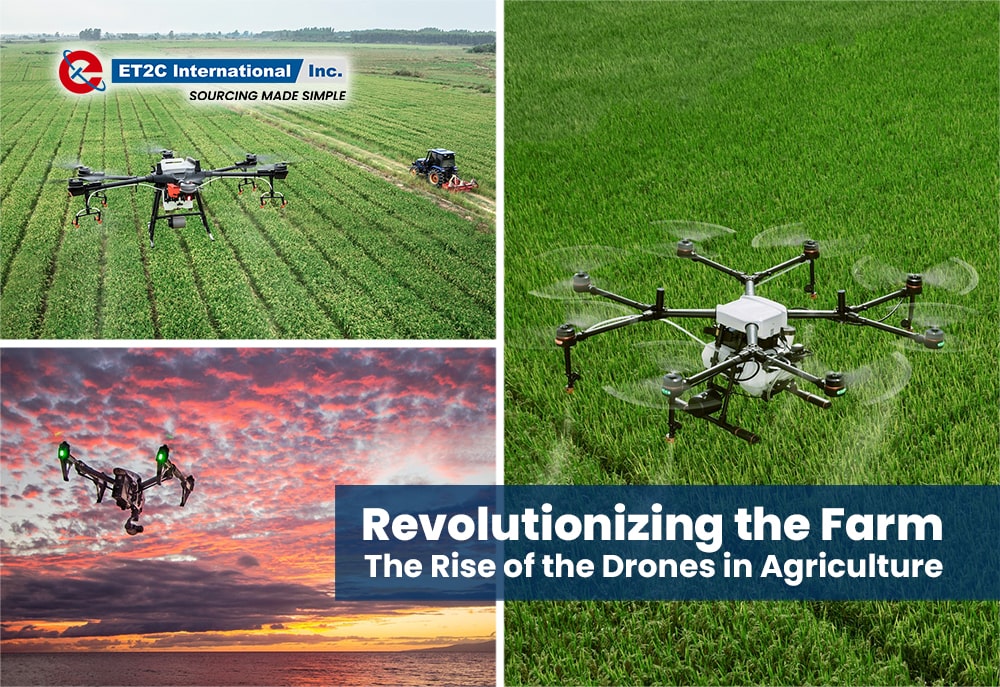
Benefits of Using Litchi Drone
Improved Crop Yield
With a deep understanding of how the Litchi Drone operates, let’s delve into the tangible benefits it brings to farmers. The most apparent advantage? Improved crop yield. Farmers are always seeking ways to increase productivity, and the Litchi Drone offers innovative solutions that can help reach that goal. One significant factor contributing to improved crop yields is the ability to monitor plants accurately and consistently. The Litchi Drone provides farmers with detailed insights into plant health, enabling them to address issues promptly. Here’s how it works:
- Early Detection of Issues: The drone’s high-resolution cameras and sensors can identify problems like pest issues, diseases, or nutrient deficiencies before they escalate. By catching these issues early, farmers can mitigate potential damage.
- Targeted Interventions: With the data gathered, farmers can apply fertilizers, pesticides, or water directly where needed, rather than over-treating the entire field. This targeted approach ensures optimal health for crops.
- Data-Driven Decisions: The detailed reports generated allow farmers to adapt their strategies based on actual conditions rather than assumptions. For instance, adjusting irrigation schedules based on soil moisture readings can directly lead to healthier crops and better yields.
A farmer I recently spoke with shared how, after integrating the Litchi Drone into his corn farming practices, he witnessed a remarkable increase in his yield. By using the drone, he discovered a portion of his field that was suffering from nutrient deficiency that he hadn’t noticed before. Once he applied the necessary treatments, his yields soared by 20% that season! Let’s summarize how the Litchi Drone contributes to improved crop yield:
- Faster Problem Solving: Timely intervention leads to healthier plants and reduced losses.
- Higher Productivity: Well-managed crops produce better yields, contributing directly to the farmer’s bottom line.
Improved crop yield translates to not only greater food production but also increased profitability. The Litchi Drone empowers farmers to grow more effectively in our ever-changing agricultural landscape.
Cost Savings for Farmers
When it comes to farming, balancing costs while maximizing output is crucial. Enter the Litchi Drone again, which brings significant cost savings for farmers on multiple fronts. Let’s explore some of the ways the Litchi Drone helps farmers save money over time:
- Resource Efficiency: By enabling precise applications of water, fertilizers, and pesticides, farmers waste fewer resources. This efficiency results in a substantial reduction in material costs, making a marked difference in annual expenses.
- Reduced Labor Costs: Automation through the Litchi Drone eliminates the need for extensive manual monitoring, allowing farmers to reduce labor hours and costs significantly. With more tasks being conducted remotely, the overhead related to labor can be trimmed.
- Better Decision Making: Enhanced data leads to smarter resource allocation. A farmer can quickly see which sections of the field are underperforming and prioritize their interventions accordingly, thus saving money on ineffective treatments.
One inspiring example involves a local soybean farmer who shared his experience after adopting the Litchi Drone. He estimated a 30% reduction in fertilizer costs by applying inputs only to areas that needed them. Additionally, the time saved from less hands-on inspection allowed him to focus on expanding his operations. Here’s a quick breakdown of how using the Litchi Drone translates into cost savings:
| Cost Savings Aspect | Description |
|---|---|
| Resource Efficiency | Minimizes waste of inputs like fertilizers. |
| Reduced Labor Costs | Automates monitoring, leading to decreased labor expenses. |
| Informed Decisions | Data-driven management helps optimize resource allocation. |
In summary, the Litchi Drone does not only enhance crop yield but also supports farmers in trimming costs without sacrificing quality or productivity. By incorporating cutting-edge technology into farming practices, the Litchi Drone lays the foundation for a more sustainable, efficient, and profitable agricultural landscape. Next, we will take a look at some impressive case studies of successful implementations of the Litchi Drone across various farming contexts. Stick around to see how this technology is making waves in the agricultural community! 🌿💰
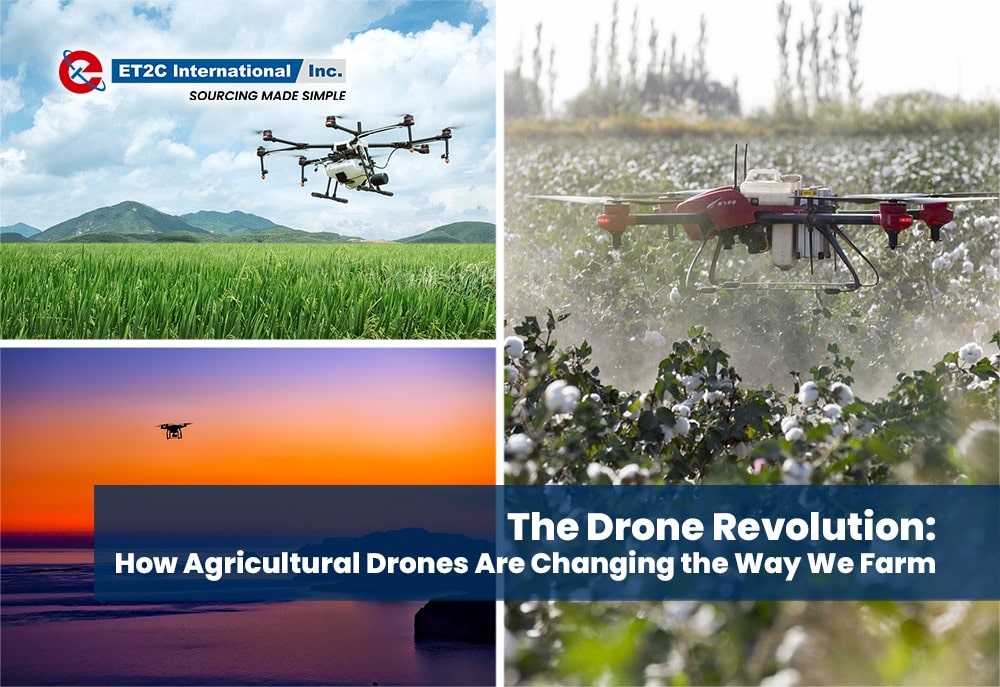
Case Studies of Successful Implementation
Agricultural Farms
As we continue our exploration of the Litchi Drone, looking into real-life examples provides a clear picture of its remarkable impact on agriculture. Numerous agricultural farms have successfully adopted this technology, resulting in enhanced efficiency, improved yields, and cost savings. Let’s explore a couple of inspiring case studies that highlight its benefits. One notable example involves a mid-sized wheat farm in the Midwest, run by a family for three generations. Struggling with inconsistent yields and inefficiencies, they decided to implement the Litchi Drone into their farming practices. Here’s how it transformed their operations:
- Field Analysis: The farm utilized the drone to conduct thorough analysis using multispectral imaging. This revealed areas of the field that were nutrient-deficient and needed targeted intervention.
- Precision Applications: Using the drone’s capabilities, they were able to apply fertilizers only to affected zones, maximizing resource efficiency and minimizing waste.
- Yield Increase: By the end of the first growing season with the Litchi Drone, the family saw a 15% increase in their wheat yield, translating to a substantial increase in profit.
A farmer from the same area mentioned that the detailed maps generated by the drone not only helped in decision making but also made it easy to plan crop rotation and future planting strategies. To summarize, here are the key outcomes from this agricultural farm’s experience:
| Benefit | Description |
|---|---|
| Enhanced Field Analysis | Identified nutrient discrepancies swiftly. |
| Targeted Fertilization | More efficient use of resources led to reduced costs. |
| Increased Overall Yield | A 15% boost in yield in the first season of use. |
This case exemplifies how agricultural farms can leverage the Litchi Drone to achieve significant improvements in both productivity and sustainability.
Plantation Owners
Now, let’s look at how plantation owners have benefitted from implementing the Litchi Drone into their management practices. The world of plantations generally involves vast expanses of crops, making monitoring labor-intensive and challenging. Yet, the story of a coconut plantation owner in Southeast Asia illustrates just how beneficial drone technology can be. Faced with issues such as sporadic crop yields and pest infestations, the owner decided to adopt the Litchi Drone, which yielded impressive results:
- Pest Monitoring: The drone flew over the plantation regularly, capturing images that detected early signs of pest infestations that humans would have missed. This allowed timely interventions to protect the trees.
- Soil Quality Analysis: Utilizing the remote sensing features, the plantation owner could assess soil moisture and nutrient levels across different sections of the plantation, optimizing irrigation systems accordingly.
- Yield Improvement: After a season of employing the drone, the plantation reported a 25% increase in coconut production, largely due to better pest management and precise irrigation techniques.
Here’s a breakdown of the benefits observed by the coconut plantation owner:
| Benefit | Description |
|---|---|
| Enhanced Pest Detection | Early intervention reduced crop losses. |
| Optimized Water Usage | Improved irrigation saving resources. |
| Increased Production | A remarkable 25% increase in coconut yield. |
The success story of this coconut plantation owner emphasizes the power of the Litchi Drone in effectively managing large areas of crops, ensuring that precision agriculture can be applied no matter the scale of the operation. In conclusion, the case studies from both agricultural farms and plantation owners illustrate just how transformative the Litchi Drone can be. By enabling precise monitoring, promoting resource efficiency, and ultimately enhancing productivity, this advancement in technology is helping farmers and plantation owners thrive in today’s challenging agricultural landscape. In the upcoming section, we’ll take a peek into the future developments in agricultural drone technology, especially regarding the integration of AI and potential applications beyond farming. Stay with us on this enlightening journey! 🌱🌍
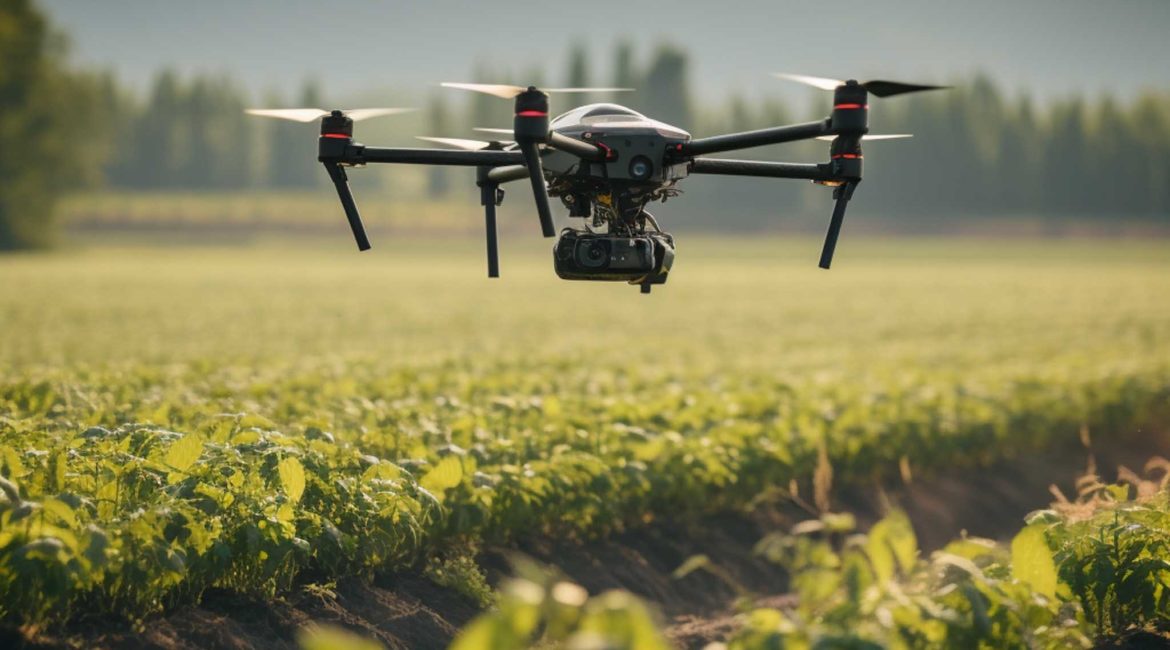
Future Developments in Agricultural Drone Technology
Incorporating AI
As we peer into the horizon of agricultural drone technology, it’s clear that the future holds incredible potential. One of the most exciting developments on the horizon is the incorporation of Artificial Intelligence (AI) into drone operations. This integration promises to enhance the capabilities of drones like the Litchi Drone, paving the way for smarter and more efficient farming practices. Imagine having a drone not just capable of capturing data but also programmed to analyze it and suggest actions based on real-time assessments. Here’s how incorporating AI can revolutionize agricultural drones:
- Automated Decision-Making: With advanced algorithms, drones can process vast amounts of data quickly, making real-time decisions about irrigation needs, pest control measures, and nutrient applications. This level of automation allows farmers to focus on strategic planning rather than getting bogged down in the details.
- Predictive Analytics: AI can facilitate predictive modeling, enabling farmers to forecast crop yields and potential issues before they arise. Such foresight allows for proactive planning, reducing risks associated with unforeseen problems.
- Efficiency Optimization: AI can help in optimizing flight paths for drones, ensuring they cover the fields in the most efficient way possible. This minimizes flight time and maximizes data collection, leading to enhanced resource allocation.
I recently chatted with a tech-savvy farmer who is currently participating in a pilot program involving AI-integrated drone technology. He excitedly shared that his AI-equipped drone can now not only gather data but also make recommendations on soil treatments based on ongoing weather patterns and crop health metrics. This development has revolutionized his farming practices and has noticeably improved his operational efficiency. A quick summary of the potential benefits of AI in agricultural drones includes:
| Benefit | Description |
|---|---|
| Automated Decision-Making | Streamlines operational tasks and reduces labor. |
| Predictive Analytics | Provides foresight to mitigate risks. |
| Efficiency Optimization | Enhances resource allocation and saves time. |
With AI’s incorporation into drone technology, farms can expect to become increasingly productive and responsive, adapting to challenges faster than ever before.
Potential Applications Beyond Farming
While drones like the Litchi Drone have primarily made their mark in agriculture, the innovations that stem from this technology hold immense possibilities beyond farming as well. Let’s dive into some potential applications that could reshape various industries:
- Environmental Monitoring: Drones equipped with advanced sensors can monitor forests, wetlands, and wildlife habitats, providing data for biodiversity studies and conservation efforts. For example, they can track deforestation rates or analyze the health of urban forests.
- Disaster Management: In instances of natural disasters, drones can assess damage, locate victims, and deliver supplies where necessary. Their real-time aerial views enable better resource allocation during rescue missions and can aid in planning recovery efforts.
- Surveying and Mapping: Various industries, including construction and mining, can benefit from high-resolution aerial mapping and surveying provided by drones. These insights facilitate project planning, track progress, and monitor changes over time.
- Urban Planning: Urban planners can leverage drones for data collection on traffic patterns, infrastructure conditions, and land use, helping to create better-designed cities that accommodate growth and sustainability.
I recently attended a seminar where experts in drone technology discussed real-world applications beyond agriculture. A representative from an environmental organization spoke about using drones to monitor coral reef health, showcasing how aerial data can facilitate effective reef restoration efforts. It’s a fascinating peek into how inherently agricultural technology is crossing into new territories. In this evolving landscape, we can only guess what other innovative applications might emerge! The synergy between agriculture and technology continues to create a fertile ground for ideas that can change lives and improve our world. In conclusion, the future landscape of agricultural drone technology looks promising with the integration of AI and a broad spectrum of applications beyond farming. As we embrace these advancements, there’s no telling how they will shape industries and contribute to a more sustainable future. Exciting times lie ahead! 🌟🚀
